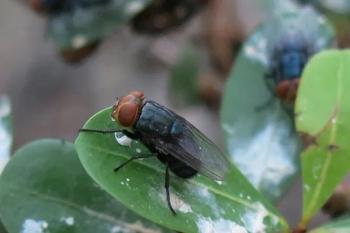
Neonatal immunology-practical vaccinology (Proceedings)
There are a plethora of commercially available vaccines available for use in cattle, the majority of which target viral and bacterial pathogens of the respiratory and enteric tracts.
There are a plethora of commercially available vaccines available for use in cattle, the majority of which target viral and bacterial pathogens of the respiratory and enteric tracts. As veterinarians we often find ourselves positioned somewhere in the middle between vaccine manufacturers with data to share and product to sell, and producers anxious to realize both a health and economic advantage from the use of that product. The issue becomes even more challenging when we are faced with an ongoing outbreak of disease or the recent memory of an etiologic diagnosis for which a product or products may be available and a client anxious to do something different prophylactically to prevent future recurrence. Rarely (although it still can occur) these days does a vaccine result in specific harm or worse still death, but a more relevant issue is whether or not it actually confers a protective advantage. This presentation will focus on immunology of the calf from birth through the first year of life and the products available commercially. Wherever possible evidence based medicine from the literature will be cited to support/refute the applicability of using products against specific pathogens at certain ages. Inevitably however, there are considerable holes in the literature, and many vaccine programs on farm are the result of compromise and the collective experience of veterinarians and producers.
First principles
Decades old basic immunologic research underscores what all veterinary graduates should know –namely that the new born calf is immunologically best served and protected against infectious disease by passively acquired antibodies in colostrum and the provision of good biosecurity and general hygiene during the first few weeks of life. In the broadest terms, vaccination of calves should ideally take place after the waning of maternally derived antibody, typically at or beyond weaning age in dairy calves. However, the strict implementation of this dogma has become more and more challenging as time goes by. Challenges to the success of programs that rely entirely on this approach are wrought by several common de facto features of modern dairying and heifer replacement rearing. In no specific order, comingling wet or recently born calves from multiple sources on contract heifer rearing farms, feeding alternatives to colostrum as part of herd health/biosecurity for infectious diseases such as Johne's Disease or BLV, and endemic infection and environmental contamination with organisms such as Salmonella, are all commonly encountered factors, amongst others, that can challenge or overwhelm the long favored traditional and simplistic approach. Inevitable, ubiquitous, and high dose exposure to numerous pathogens, literally from the moment of birth onwards, allied with the still significant proportion of calves for whom adequacy of passive transfer is not achieved combine to produce higher than targeted morbidity and mortality rates. The perception that enhanced frequency, increased antigen number and precocious vaccine timing will overcome or reverse this trend is understandable but flawed both in science and in reality. Overall it is important to remember that there is an inverse, but linear relationship between the calf's age and immune responsiveness (the older the calf the better the response to vaccination), and maternally derived antibodies and protection against disease (the older the calf the poorer the protection afforded by passively derived antibody); and that at some point in the first two to four months of life there is cross over between the two. The precise timing of this is quite individually variable and we do not have a good, practical and economic way to estimate it in even general terms let alone for specific pathogens.
Specific pathogens – viruses
BVDV
Aggressive vaccination programs, improved vaccine technology and improved biosecurity have contributed to improvement in BVDV prevention in adult dairy cattle. However, as a clinical disease entity BVDV and the various clinical syndromes with which it can be associated are rarely encountered in calves during the first year of life. This is not meant to suggest that calves should not receive an initial BVD vaccine course but there is no evidence to support early BVDV vaccine use, certainly not before the natural waning of maternally derived antibody has taken place. Studies show us that maternally derived antibody typically lasts well into the 3rd month of life, and that vaccine use prior to 2 months is often not protective in dairy calves Therefore a primary BVDV course that gives two injections 3-4 weeks apart with the second vaccine timed for the end of the 3rd month/beginning of the 4th month of age is suggested. Much is sometimes made of including type 2 BVDV antigens rather than products purely derived from older type 1 BVDV strains but in many instances the cross protection afforded by the latter is comparable.
IBR (BHV-1)
Clinical disease due to infection with IBR is rare in heifer replacements, and as with BVDV there is consequently really no pathogen specific need to consider vaccination against IBR prior to diminution of maternally derived antibody. However, it has become commonplace, with some significant scientific justification, to use intranasal BHV-1 vaccines in the peri-weaning period. The beneficial effects of intranasal products versus BHV-1 are that they induce respiratory epithelial interferon production that can also be appreciated systemically, conferring non-specific protection (especially anti-viral) against other pathogens and contribute to the overall maturation of the calf's immune system. Do not use BHV-1 vaccines parenterally in calves at this age however. Because this interferon induction is very rapid when IN BHV-1 vaccines are used and we are increasingly aware that many calves experience respiratory disease of clinical relevance in the mid to late pre-weaning period it has become common to administer such products before 2 months of age. A personal preference is to do so approximately 1 week before co-mingling at weaning.
BRSV
In contrast to BVDV and BHV-1, BRSV is of clinical relevance in young calves but unfortunately vaccination against this disease presents some current challenges. There is considerable genetic heterogeneity between BRSV isolates and clinical experience would also suggest that immunity following natural infection or vaccination is not enduring on farm. Unfortunately there is conflicting scientific evidence on the protective effect of maternally derived antibody versus challenge in the first few months of life, and initial attempts at vaccine usage were associated with exacerbated clinical disease. More recent studies in Europe and the US have also produced conflicting results with newer commercially available IN and parenteral vaccines that make BRSV vaccine programs in young calves hard to articulate. For example although two studies have demonstrated that intranasal administration of a MLV product to pre-weaning age dairy calves may reduce clinical disease in vaccinates, and that the off-label administration of a parenterally labeled MLV vaccine intranasally in 3 week old calves may also confer protection against challenge 3 weeks later at weaning age, a more recent study demonstrated no protective effect for IN BRSV vaccine use in dairy calves at 3-8 days of age when challenged 3 weeks later. It is likely that maternally derived antibody against BRSV can interfere even with IN vaccine use, making it unpredictable as to when BRSV vaccine use might be timed prior to 3 months of age.
Rotavirus/coronavirus
There are several factors that emphasize the value of passively derived antibody protection against these two enteric viruses in calves. Firstly, maternally derived antibodies against both are so ubiquitous even in unvaccinated dams, and they interfere so effectively with active immunization efforts for neonates that there is little economic or scientific rationale for attempting to protect calves by active immunization in the neonatal period. Despite this there are of course farms that use oral vaccines in newborns against these two viruses, rarely with data to suggest that colostrum on that farm has low to absent titres. Delaying colostrum administration for a few minutes to a few hours after vaccination of the calf has been advocated to enhance vaccine efficacy, but this is a highly dubious practice in of itself.
Salmonella
In our practice area vaccination of calves pre and post weaning against Salmonella has become commonplace. There are two main vaccines currently being used, each off-label, the sub-unit SRP vaccine and a modified live Salmonella Dublin product. The scientific evidence regarding efficacy for either in this age of calf is hard to find, and there are a seemingly endless set of possible permutations being employed in terms of route, dose and age at administration for both. Strong opinions often exist with practitioners and producers as to the efficacy of these products however. There are numerous anecdotal experiences suggesting the potential lethality of the modified live Salmonella Dublin product when given parenterally, and the fact that many producers are still inclined to use it underscores the frustration that has developed with Salmonellosis due to this serotype in dairy calves in recent years. Other Salmonella containing bacterins/toxoids, whether commercially available, or autogenously produced to order for clients based upon a farm isolate suffer from the same lack of evidence based research to support their use in young calves.
Mycoplasma bovis
An increasing awareness of Mycoplasma bovis as a pathogen of relevance in heifer replacements from the perspective of respiratory disease and ear infections has led to interest in calfhood vaccination with bacterins incorporating this organism. Although antibody responses to vaccination are indeed demonstrable, efficacy studies confirming a conferred advantage from their use are conspicuously absent, indeed the most recent published study using a commercially available product in dairy calves on Florida dairies administered three times in the first 35 days of life failed to demonstrate any efficacy.
Clostridial species
In the broadest terms there are two different disease types for which Clostridial vaccines are utilized in cattle; musculoskeletal disease (muscle/soft tissue infections such as those due to Clostridium chauvoei) and enteric diseases (such as those associated with Clostridium perfringens and those caused by flukes and infection with Clostridium novyi type B). In dairy calves the most prominent Clostridial diseases are those enteric diseases of the pre-weaning period caused by Clostridium perfringens – typically enterotoxaemia in the first two weeks of life due to Clostridium perfringens type c, and the somewhat rarer abomasitis/tympany due to Clostridium perfringens type A in older calves. Unfortunately both diseases demonstrate high mortality rates. Because maternally derived antibody has been shown to significantly interfere with immune responses to Clostridial toxoids through 2 months of age, protection against enterotoxaemia is best achieved by dry cow vaccination with type C containing products and the provision of excellent passive transfer. There is only one type A product available commercially and its use probably ought to be confined to those situations where a diagnostic work-up has categorically established this pathogen as problematic on the farm in question. The multivalent (7 and 9 way) Clostridial toxoids can be associated with marked local and occasionally systemic inflammatory reactions which combined with the previously stated interference by maternal antibody makes me extremely reluctant to use them in pre-weaning age calves.
E.coli
The only E.coli vaccines that one might consider for calves would be the oral enterotoxigenic E.coli monoclonal antibody preparations designed to confer protection during the first few days of life. In most instances preference is given to protecting calves against this disease via colostral antibody following dry cow vaccination, however during outbreaks or in situations where dam's colostrum is not being fed, the administration of these antibodies is entirely appropriate. Using combination products with rotavirus and coronavirus in neonatal calves is not recommended due to the lack of proven efficacy, particularly of the viral components.
Leptospira
Traditionally Leptospira vaccination with multivalent products (usually 5 serovar containing bacterins) has been part of the routine vaccination program for bred heifers and adult cattle in the US, but the level of protection afforded against the host adapted serovar (hardjo) by these products has been poor, and has failed to prevent chronic renal colonization and the carrier status. Use of either of the two commercially available monovalent Leptospira borgpetersenii serovar hardjo products shows far greater promise for controlling the host adapted serovar in both dairy and beef cattle. Increasing concerns over potential infection and renal colonization at very young ages (even potentially pre-weaning) has led to more aggressive vaccine programs with these monovalent products, such that it is now quite commonplace for heifer calves to receive their first injection prior to weaning. It appears that vaccination this young may still protect against infection throughout the first year of life, with few to no reports of adverse side effects.
Mannheimia and pasteurella
Both killed bacterin/toxoids and modified live vaccines are available for these common respiratory pathogens, but efficacy studies have not been forthcoming. Although the products currently available are far safer than those that were available historically, interference from maternally derived antibody certainly down plays their relevance pre-weaning and lack of efficacy makes them unlikely to be useful and economically justifiable in older calves.
References
Cortese VS. Neonatal immunology. Vet Clin Nth Amer, Food Animal. 2009, 25, 221-229.
Chase CL, Hurley DJ, Reber AJ. Neonatal immune development in the calf and its impact on vaccine response. Vet Clin Nth Amer. 2008, 24, 87-105.
Ackermann MR, Derscheid R, Roth JA. Innate immunology of bovine respiratory disease. 2010, 26, 215-228.
Srikumaran S, Kelling Cl, Ambagala A. Immune evasion by pathogens of bovine respiratory disease complex. Anim Health Res Rev. 2008, 8, 215-229.
Firth AM, Shewen PE, Hodgins DC. Passive and active components of neonatal immune defenses. Anim Health Res Rev. 2005, 6, 143-158.
Hodgins DC, Shewen PE. Serologic responses of young colostrum fed dairy calves to antigens of Pasteruella haemolytica A1. Vaccine. 1998, 20, 2018-2025.
Munoz-Zanzi CA, Thurmond MC, Johnson WO, Hietala SK. Predicted ages of dairy calves when colostrum derived bovine viral diarrhea virus antibodies would no longer offer protection against disease or interfere with vaccination. J Am Vet Med Assoc. 2002, 221, 678-685.
Rush DM, Thurmond MC, Munoz-Zanzi CA, Hietala SK. Descriptive epidemiology of postnatal viral diarrhea virus infection in intensively managed dairy heifers. J Am Vet Med Assoc. 2001, 219, 1426-1431.
Ellis JA, Gow SP, Workman A, Henderson G, Rhodes C, Alaniz G, Meinert TR, Tucker CM. Efficacy of a combination viral vaccine for protection of cattle against experimental infection with field isolates of bovine herpes virus 1. J Am Vet Med Assoc. 2009, 235, 563-572.
Mawhinney IC, Burrows MR. Protection against bovine respiratory syncytial virus challenge following a single dose of vaccine in young calves with maternal antibody. Vet Rec 2005, 156, 139-143.
Ellis J, Gow S, West K, Waldner C, Rhodes C, Mutwiri G, Rosenberg H. Response of calves to challenge exposure with virulent BRSV following intranasal administration of vaccines formulated for parenteral administration. J Am Vet Med Assoc, 2007, 230, 233-243.
Maunsell FP, Donovan AG, Risco C, Brown M. Field evaluation of a Mycoplasma bovis bacterin in young dairy calves. Vaccine 2009, 27, 2781-2788.
Zuerner RL, Alt DP, Palmer MV, Thacker TC, Olsen SC. A Leptospira borgpetersenii serovar hardjo vaccine induces a Th1 response, activates NK cells and reduces renal colonization. Clin Vacc Immunol 2011, 18, 684-691.
Newsletter
From exam room tips to practice management insights, get trusted veterinary news delivered straight to your inbox—subscribe to dvm360.






